Desert Climate in Australia: Australia's Unique Arid Ecosystems
Australia, a vast and diverse continent, is famous for its stunning landscapes and extensive desert regions.
These desert climates offer a unique blend of beauty, extreme temperatures and specialised ecosystems that have adapted to survive in arid conditions. From scorching hot deserts in Central and Western Australia to subtropical deserts along the eastern coast, Australia possesses a variety of desert climates.
What is a Desert Climate?
A desert climate, also known as an arid climate, is a type of climate characterised by extremely low precipitation levels and high evaporation rates, receiving less than 250mm to 500mm annually. As a result, desert regions are often characterised by dry, barren landscapes with sparse vegetation.
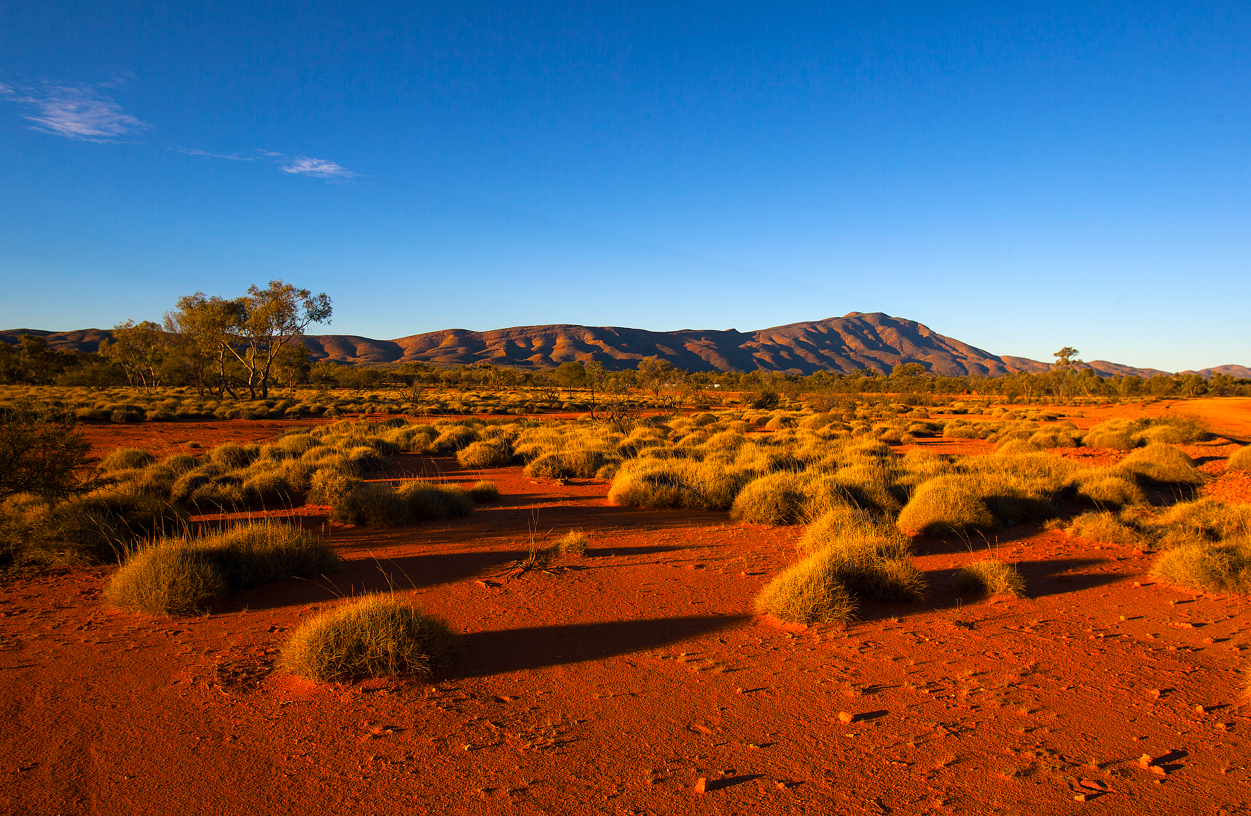
Image: Out the back of Alice Springs. Source: iStock.
What is a Desert Climate in Australia?
To understand what constitutes a desert climate in Australia, we must first understand how climate is classified. Due to its vast size, Australia possesses a wide range of climatic zones. From humid rainforests to arid deserts and temperate regions, the continent's vastness and geographical features create varied climates. One of the most effective ways to understand and describe this diversity is through the Köppen Climate Classification System.
Köppen Climate Classification System in Australia
The Köppen Climate Classification System, developed by Wladimir Köppen in the early 20th century, is one of the most widely used methods for classifying the world's climates. A modified Köppen classification system as outlined by the Bureau of Meteorology illustrates six primary categories of climate regions throughout Australia, expanded on in the section below.
These regions are delineated based on the climate boundaries suitable for indigenous plants. The underlying principle of this classification technique is that the local plant species most accurately reflect the region's climate.
Major Climate Types in Australia
Equatorial: This climate zone is characterised by consistent, high temperatures year-round and frequent rainfall in the summer, typically found near the equator.
Tropical: Found slightly away from the equator, tropical climates experience warm temperatures throughout the year with distinct wet and dry seasons.
Subtropical: This zone enjoys mild to warm temperatures with relatively high rainfall, mostly located in the mid-latitudes.
Desert: Dominated by arid conditions, desert climates have low rainfall and can experience extremely high daytime temperatures and chilly nights.
Grassland: Often situated between desert and forested zones, grassland climates have moderate rainfall, making them suitable for grassy vegetation but not dense forests.
Temperate: Located in the southern regions of Australia, temperate zones experience distinct seasons with moderate to high rainfall and varying temperatures from warm summers to cold winters.
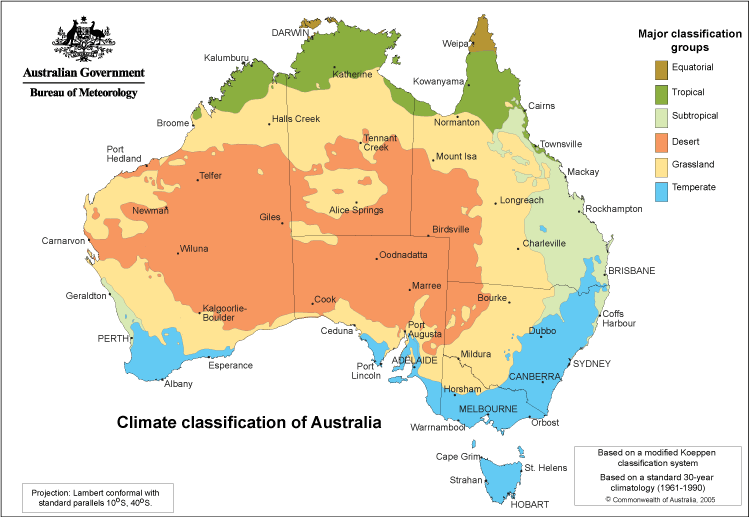
Image: It might seem strange to see Horsham and Hobart in the same climate group, but these are broad classifications. Source: BoM.
So Why is Australia so Dry?
Australia's aridity is a result of both its geographic positioning and several climatic factors that converge to create vast stretches of dry landscapes.
Firstly, Australia lies in a region dominated by high-pressure systems, particularly the subtropical ridge, which is synonymous with clear skies and limited rainfall. These high-pressure systems push moist oceanic air masses away, resulting in predominant easterly winds that have already lost most of their moisture by the time they reach the central and western parts of the continent.
Several other climatic factors contribute to the dryness. The cold waters of the West Australian Current off the west coast ensure that moisture-laden winds from the Indian Ocean don't reach the continent.
In the east, the Great Dividing Range acts as a barrier, causing moist air from the Pacific Ocean to rise, cool, and drop its rain on the coastal side, leaving little moisture for areas further inland. Furthermore, the periodic influence of El Niño typically brings drier and hotter conditions, exacerbating droughts and reinforcing the dry conditions typical of many parts of Australia. Consequently, these various factors work in tandem to produce the expansive desert landscapes characteristic of Australia's interior.
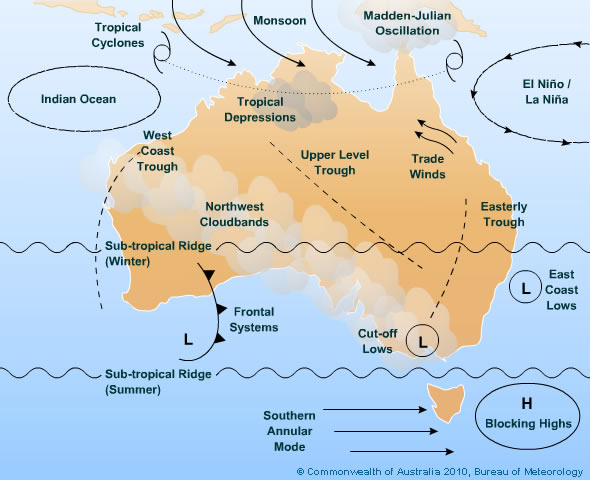
Image: To be clear, you don't get all of this at once, or it'd be a weird weather day if you did! Source: BoM.
Australia's Desert Regions
As a result of Australia’s climate drivers, the country is home to extensive and famous desert regions accounting for roughly 18% of the country's land area. These regions are predominantly found in the central and western parts of the country. Notable deserts include the Great Victoria Desert and the Great Sandy Desert, as well as smaller deserts such as the Simpson Desert and the Gibson Desert.
Great Victoria Desert
As Australia's largest desert, the Great Victoria Desert stretches across southern Western Australia to western South Australia. This sand-dune dominated landscape is interspersed with salt lakes and is home to a myriad of wildlife. While it may be the largest, it isn't the hottest – but temperatures can still soar to well above 40°C in summer.
Great Sandy Desert
Situated in Western Australia's north-west, the Great Sandy Desert is characterised by vast red sand plains and dunes. It's an area rich in indigenous history, with many ancient rock engravings and art sites.
Tanami Desert
The Tanami Desert, northwest of Alice Springs, is an isolated area featuring rocky hills and spinifex grasslands. Home to Indigenous communities, it holds cultural significance and is notable for its gold mining activities, despite its harsh and remote nature.
Simpson Desert
Recognised by its iconic red sand dunes, the Simpson Desert is primarily located in the Northern Territory, extending into Queensland and South Australia. Its most distinguishing feature are the parallel sand dunes, some of which run north-south for over 100 kilometres and provide a dramatic landscape contrasted by the occasional claypan.
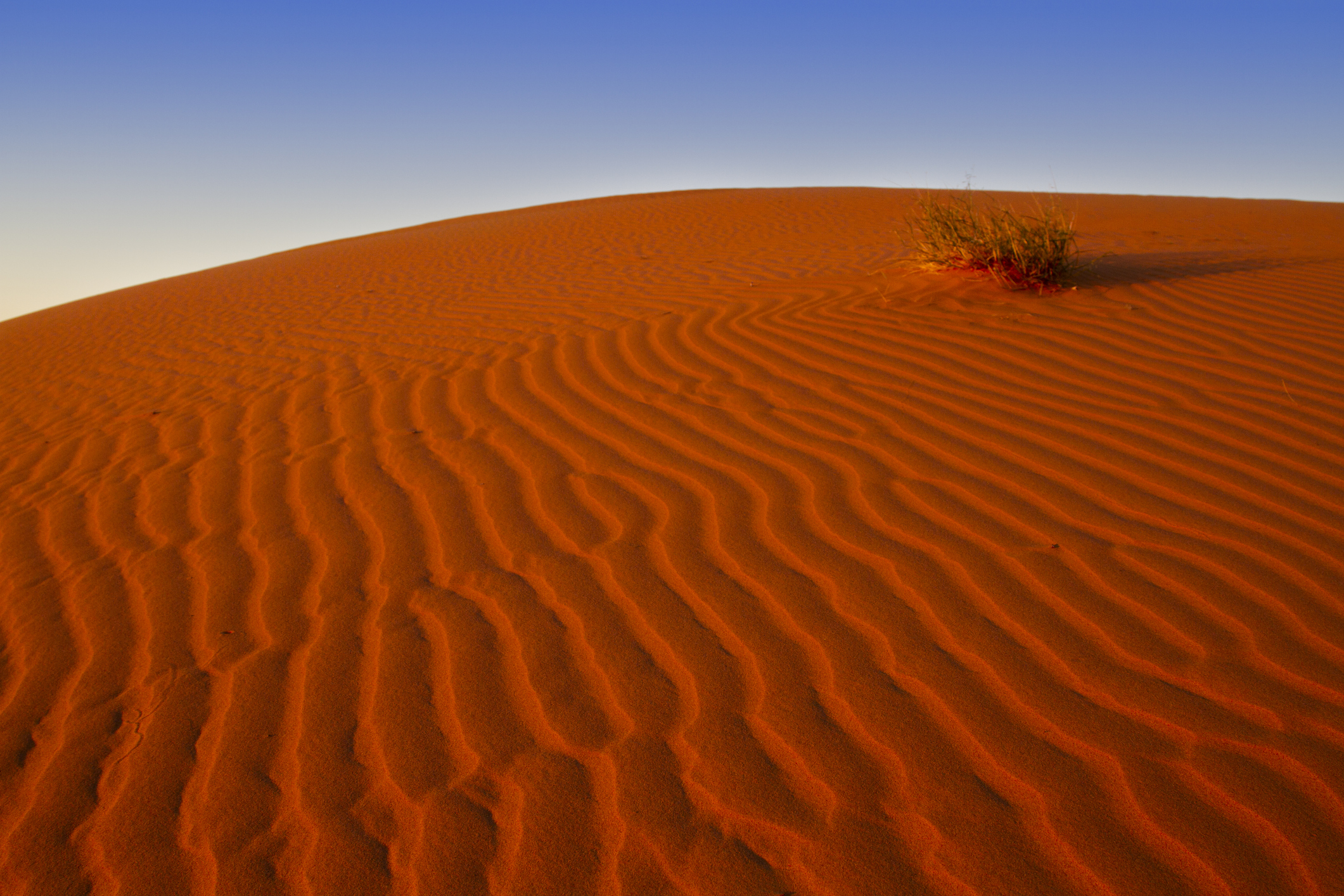
Image: "Big Red" sand dune in the Simpson desert, near Birdsville. Source: iStock
Gibson Desert
Situated between the Great Sandy and Great Victoria Deserts in Western Australia, the Gibson Desert is a vast area of gravelly plains, sand dunes, and occasional salt lakes. It becomes a vibrant spectacle after rains, with wildflowers blooming in profusion.
Little Sandy Desert
As the name suggests, this desert is smaller than its neighbouring Great Sandy Desert but shares many of its characteristics. Located in Western Australia, it comprises mainly sand plains and dunes.
Strzelecki Desert
Spanning across parts of South Australia, Queensland, and New South Wales, this desert features extensive dune fields and occasional clay pans. It's known for the rare desert mound springs fed by the Great Artesian Basin, offering a vital water source in the arid landscape, and is named for the Polish explorer who named Mt Kosciuszko.
Sturt Stony Desert
Located in the north-east of South Australia and extending into Queensland and New South Wales, this desert stands out due to its gibber-covered landscape. Named after Charles Sturt, an explorer who encountered its challenging terrain, it features vast plains dotted with hard, weathered stones.
Tirari Desert
Located in South Australia, the Tirari Desert encompasses dunes and salt pans. It's closely associated with the Lake Eyre Basin and becomes a focal point for tourists, especially during the rare occasions when Lake Eyre fills with water.
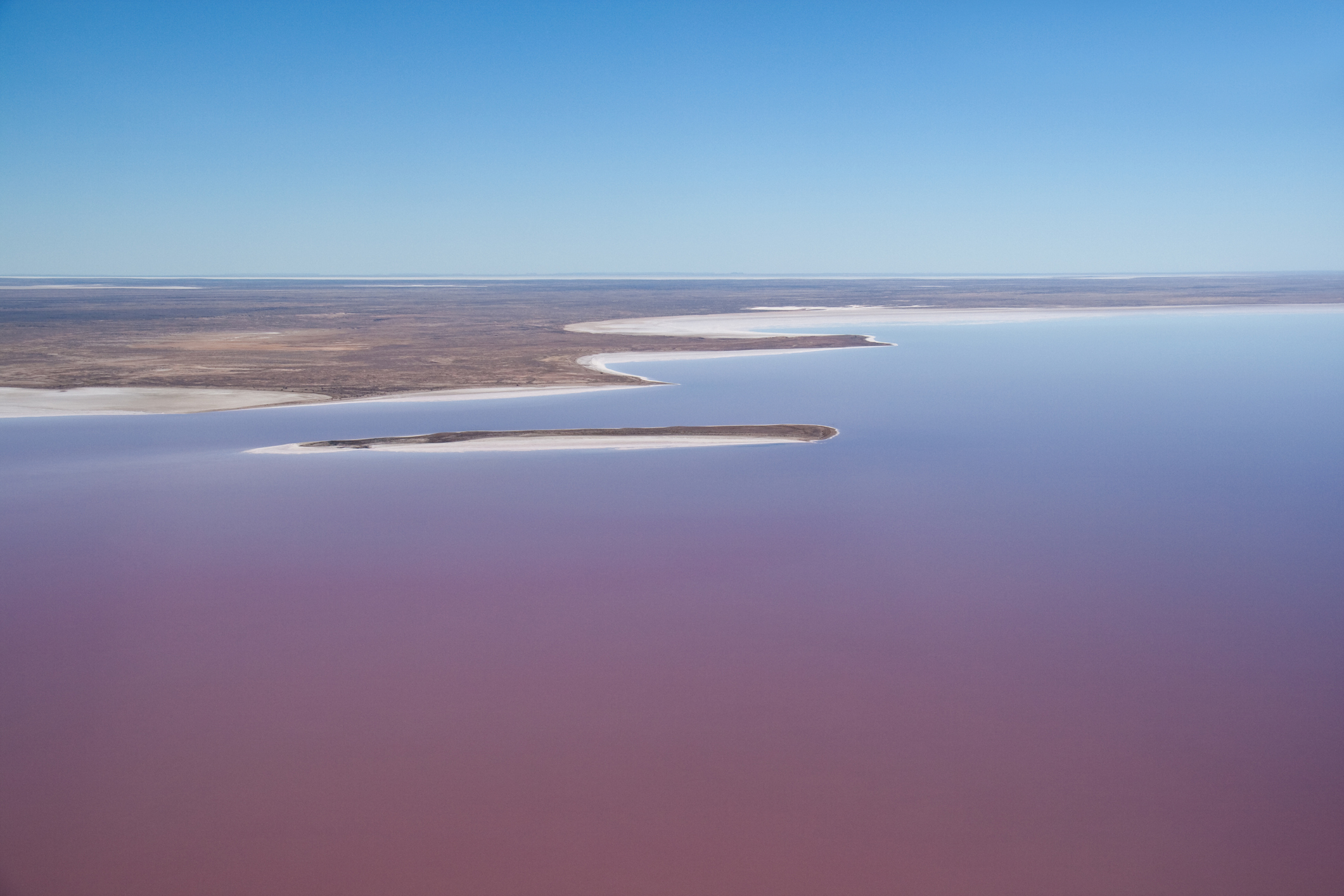
Image: This doesn't happen often. Source: iStock.
Pedirka Desert
Located in South Australia's far north, the Pedirka Desert is a smaller, lesser-known desert. It's characterised by red sand dunes and stony plains, with sparse vegetation.
Flora and Fauna in Australia's Deserts
Though deserts might seem inhospitable at first glance, they are teeming with life. Plants like spinifex grasses are perfectly adapted to the arid conditions, forming the primary vegetation. Remarkably, after rare rainfalls, the desert can burst into a riot of wildflowers, transforming the landscape into a colourful spectacle.
As for fauna, various species have evolved unique adaptations to survive in these harsh environments. Animals such as the thorny devil, which collects water through grooves in its skin, and the nocturnal bilby, which escapes the daytime heat by burrowing, showcase the resilience and ingenuity of desert wildlife.

We can never see too many pics of bilbies. Source: iStock.